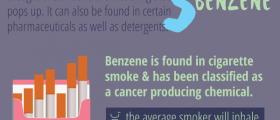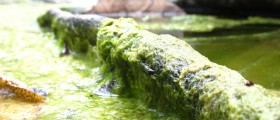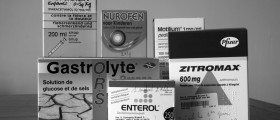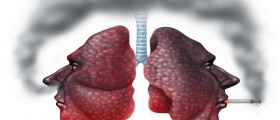What is Ricin?
Ricin is a natural, toxic protein obtained from the castor oil plant Ricinus communis. It is estimated that a rather small dose of this powerful toxin may kill an adult individual. Ricin that have contaminated the soil or environment remains toxic for several days. The protein fulfills its toxic effects by blocking cell protein synthesis. As a result the affected cells die and many organs experience failure.

What are Symptoms of Ricin Poisoning?
The severity of ricin poisoning basically depends on the amount of toxin that has entered the body as well as the way of exposure. The symptoms and signs of poisoning are most intense if the poisonous protein is inhaled.
The symptoms of the poisoning may develop 3 hours after the exposure or within the period of several days. Initially, all the casualties experience flu-like symptoms such as weakness, fever, muscle ache. Nausea, cough and breathing difficulties occur as well. In severe cases of poisoning death soon occurs usually as a result of respiratory or circulatory failure.
If the toxic protein has been accidentally ingested, a person will soon experience nausea, vomiting, diarrhea and abdominal pain. It is possible for fever to develop as well. Intestinal hemorrhage affects patients who have ingested too much ricin. Severe bleeding leads to shock, a life-threatening complication that requires prompt and aggressive treatment.
Technical Background and Potential Role in Terrorism
Experts have confirmed that the lethal dosage of ricin basically depends on the very exposure i.e. the way the poisonous substance is introduced into the body. Inhalation or introduction via injections may be lethal if there is 3-5 µg of ricin per kilogram body weight. The substance is more easily introduced into the body via inhalation, so the lethal dose is quite lower in such case. Only in case of direct contact with the poisonous substance the toxin cannot penetrate the skin, if it is intact.
Ricin has been considered a potential weapon since the 1940s. Military use of ricin may be in the form of bomb-dissemination of aerosolized ricin which allows its quick effects after entering the enemies respiratory tract. Even though the weapon of this kind was developed by the USA and the UK, fortunately it has never been actually used.
Historical data confirm that Iraq tried to utilize ricin as a weapon during the 1980s. Furthermore, in 1978 this toxin was used in an attempt to eliminate Bulgarian dissident Georgi Markov. Soon after this incident another including one more Bulgarian exile occurred. The second attack was against Vladimir Kostov.
There have been several cases of an attempt of manufacturing ricin in the United States. The individuals engaged in the process accidentally poisoned themselves, survived and then were convicted of violations of the Biological Weapons Anti-Terrorism Act. Some individuals who sent ricin to government officials, unfortunately, have never been identified.
According to many experts ricin possesses all the necessary characteristics to be a highly powerful a weapon of mass destruction. Still for its harmful effects to occur, it needs to be injected, inhaled or ingested. What is more, the poisonous substance may even penetrate the intact skin if it is combined with a certain solvent.
All the mentioned drives to conclusion that this substance can be highly lethal and if it falls into in the wrong hand may cause a disaster with catastrophic consequences. Also, ricin was listed as a Category B Agent due to its characteristics to be easily distributed and may trigger moderate morbidity rates along with not so high mortality rates.
Potential Means of Detection and Treatment
There are automated air samplers that efficiently detect the presence of aerosolized ricin. Swab-type test are also sensitive to the toxic substance allowing detection of ricin on contaminated surfaces. However, such detectors are not available to general population and are basically used by professionals who investigate potential poisoning such as health care workers. Military sectors have been trying to develop much faster detectors which will be of great help in future.
Diagnosis of ricin poisoning is based on symptoms and signs patients experience, especially if poisoning occurs in the form of mass casualties with a similar clinical picture. Patients with respiratory symptoms fail to respond to antibiotics. In such case doctors may take non-infectious agents into consideration.
Since there is no available antidote for ricin poisoning all patients are actually treated symptomatically, meaning that the goal of the treatment is to deal with symptoms of the poisoning and bring them under control. Hospitalization is a must.
Ingested substance may be partially eliminated from the patient's gastrointestinal tract with the assistance of activated charcoal. Stomach pumping is efficient only if performed soon after ingestion, when the substance is still inside the stomach and has not enter the small intestine.
Currently many countries are investigating potential treatments that will eliminate the toxin from one's body and this way reduce mortality rate as well as health complications ricin typically triggers.

















Your thoughts on this
Loading...